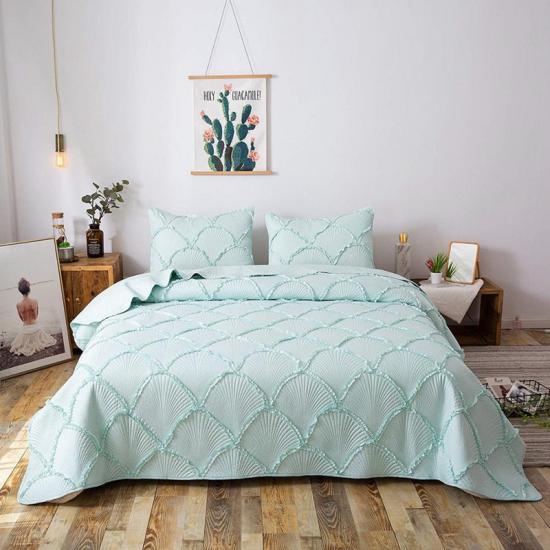There are several materials used to make solid bedding, such as sheets and comforters. Common materials include:
Cotton: Cotton is often used in bedding because it is breathable, soft, and easy to care for. Keeps you warm in cool weather and cool in warm weather.
Linen: Linen is a lightweight, durable material with excellent moisture-wicking properties, making it ideal for anyone sleeping in hot weather. Its texture is natural and gives people a refreshing and crisp feeling.
Microfiber: Microfiber bedding is made from very fine synthetic fibers that have a soft and smooth feel. They are generally wrinkle-resistant and less expensive than natural materials. Microfiber bedding is also stain and fade resistant.

Silk: Silk bedding has a luxurious feel and is smooth and soft to the touch. It has excellent breathability and excellent temperature regulation capabilities. Silk is hypoallergenic and helps keep skin hydrated, making it a good choice for people with sensitive skin or allergies.
Polyester: Polyester bedding is durable, wrinkle-resistant, and relatively inexpensive. However, it absorbs heat more easily than natural materials and may be less breathable.
These materials vary in feel, breathability, durability and ease of care. Natural materials like cotton and linen are often breathable, soft, and easy to care for. It can also withstand regular washing and will soften over time. Synthetic materials like microfiber and polyester are generally cheaper, stain-resistant, and easy to clean, but may lack the breathability and softness of natural materials.
Choosing the right bedding material comes down to personal preference, climate and budget. Before choosing a sturdy bedding material, consider factors such as comfort, durability, ease of maintenance, and specific needs (such as allergies or temperature regulation).















.jpg?imageView2/2/format/jp2)
.jpg?imageView2/2/format/jp2)
.jpg?imageView2/2/format/jp2)
.jpg?imageView2/2/format/jp2)
.jpg?imageView2/2/format/jp2)
.jpg?imageView2/2/format/jp2)
.jpg?imageView2/2/format/jp2)

.jpg?imageView2/2/format/jp2)